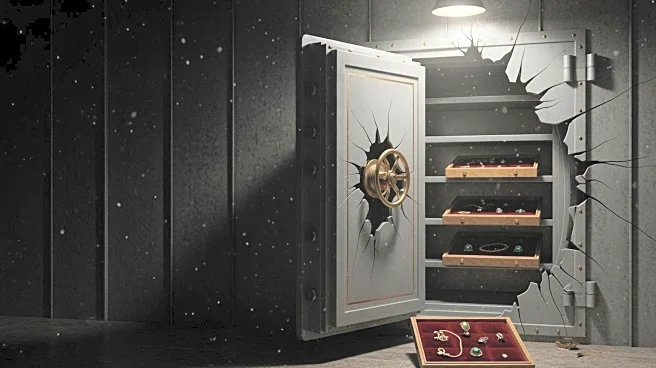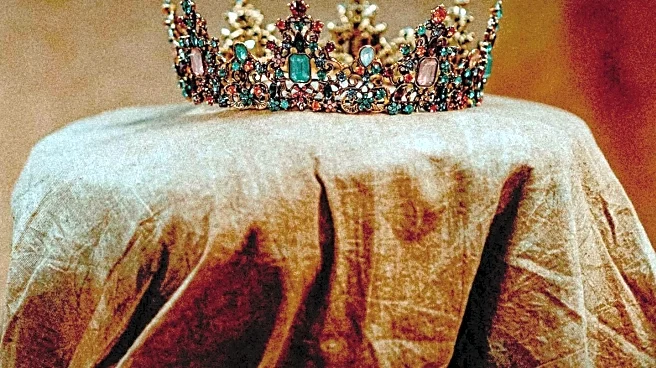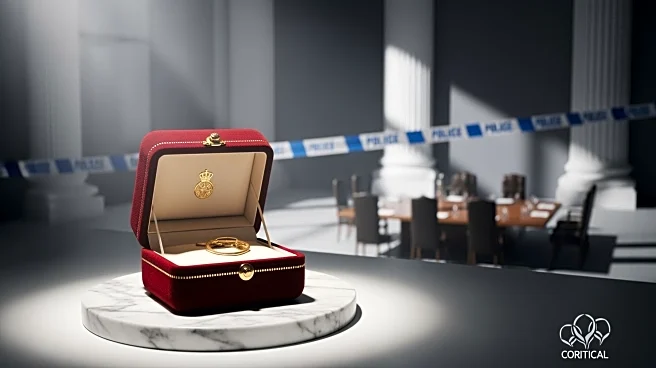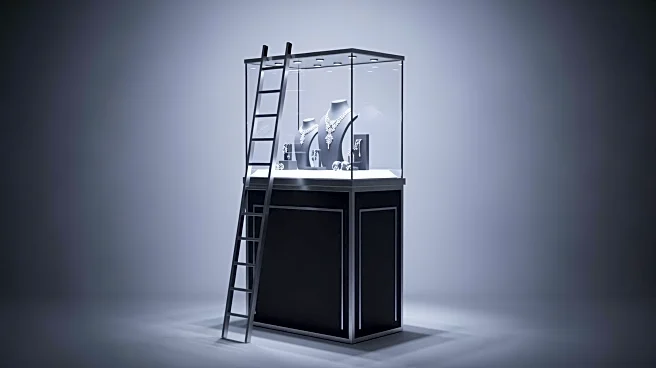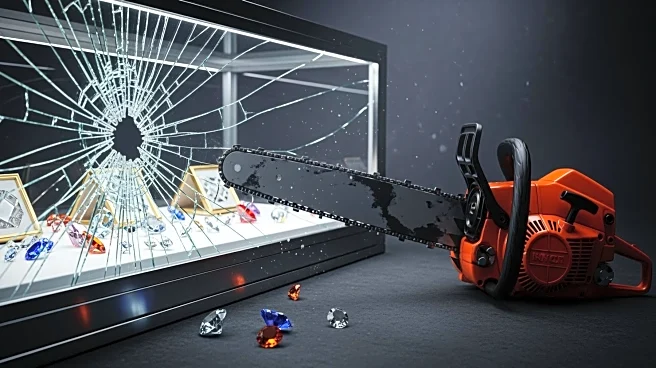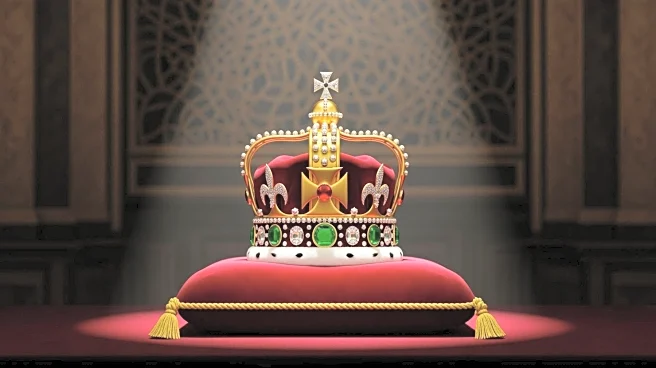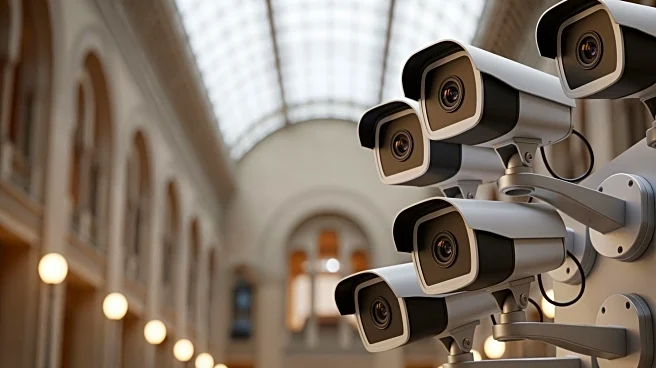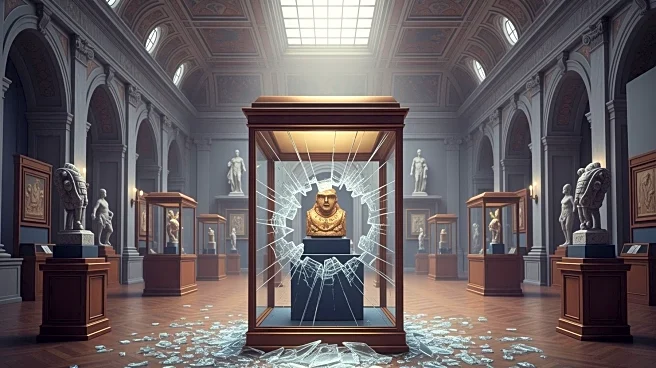What's Happening?
In a daring heist at the Louvre Museum in Paris, thieves stole priceless jewels, including pieces from the French Crown Jewels, valued at approximately $102 million. The theft occurred in a seven-minute
raid where the thieves entered through a window and smashed glass cases to access the treasures. Despite the high value of the intact pieces, experts like Stephen Portier, a master jeweler, suggest that the jewels' value would drop significantly if dismantled and sold on the black market. The unique properties of each stone, akin to a 'DNA,' make them difficult to sell without detection.
Why It's Important?
The heist highlights the vulnerability of historical artifacts in renowned museums and raises concerns about security measures. The stolen jewels, due to their historical significance and unique characteristics, are challenging to sell, which may deter future thefts. However, the incident underscores the need for enhanced security protocols to protect cultural heritage. The theft also impacts the art and jewelry market, as the stolen items are too recognizable to be sold legally, potentially leading to increased scrutiny and regulation in the industry.
What's Next?
Authorities are likely to intensify efforts to recover the stolen jewels and apprehend the thieves. The global attention on the heist may lead to increased security measures in museums worldwide. The art and jewelry markets may see heightened vigilance, with dealers and collectors being more cautious about the provenance of high-value items. The incident could also prompt discussions on international cooperation to prevent and respond to art thefts.
